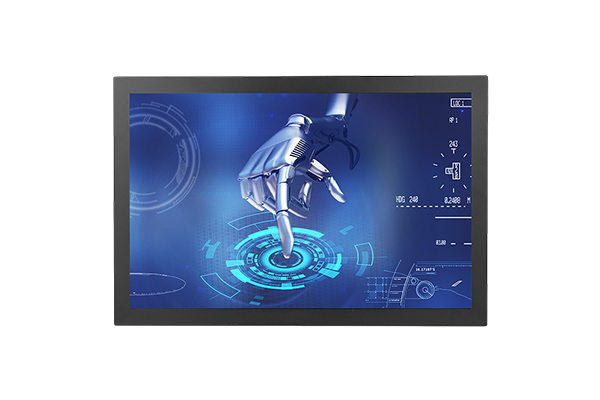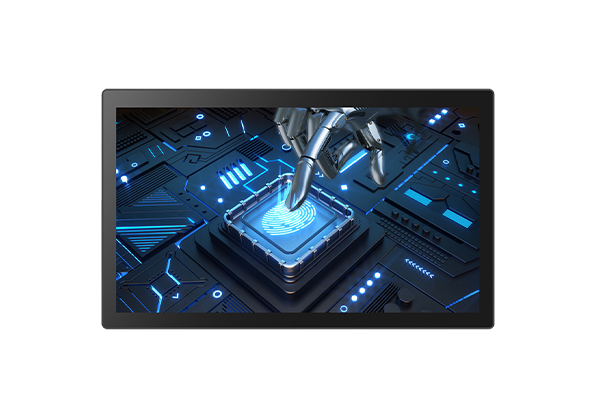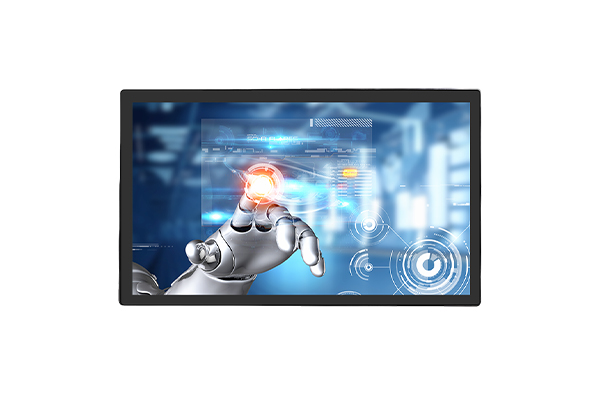How do 27-inch self-service machines alleviate the workload of window attendants?
Release Time : 2025-08-19
In high-frequency service environments like banks, hospitals, government offices, and transportation hubs, window attendants often face immense pressure: long queues, numerous repetitive tasks, and overwhelming workloads during peak hours. This not only impacts service efficiency but also easily leads to fatigue and increased error rates. With the development of intelligent technology, 27-inch self-service machines are becoming a powerful tool for alleviating window pressure. By offloading basic tasks and optimizing service processes, they significantly reduce the workload of manual window attendants and improve overall operational efficiency.
1. Offloading high-frequency basic tasks, freeing up manpower to handle complex transactions
The core value of 27-inch self-service machines lies in their ability to handle a large number of standardized, repetitive tasks, such as bank balance inquiries, transfers, and receipt printing; hospital registrations, bill payments, and report printing; and document reservations, document submissions, and progress inquiries at government offices. These tasks previously accounted for over 70% of window attendant workloads. By guiding users to use smart terminals with 10-point touch, they can quickly complete self-service operations. This frees up counter staff from simple, repetitive tasks, freeing them to focus on complex matters that require more interpersonal communication and professional judgment, such as answering inquiries, special approvals, and handling complaints.
2. 24/7 service: Extending service hours without increasing staffing
Traditional counters are limited by business hours and cannot handle services after hours or on holidays. However, 27-inch self-service kiosks operate 24/7, allowing users to conduct inquiries, pay bills, and print at any time. This "off-hours service capability" effectively disperses peak daytime traffic, avoiding congestion caused by the next-day rush, and indirectly reduces the daily pressure on counter staff.
3. Multimodal integrated design: One-stop service reduces trips to counters
Modern 27-inch self-service kiosks are no longer single-function devices. For example, high-end models equipped with a binocular camera, metal PIN pad, card reader, and scanner allow users to complete the entire process, including identity verification, password entry, document scanning, electronic signature, and receipt printing, all on one machine. For example, when opening a bank account or applying for social security, users only need to go to the counter for final confirmation after completing information entry and uploading documents through the self-service kiosk. This significantly reduces the time spent at the counter and increases the number of people served per hour.
4. Enhanced Touch Experience, Lowering the User Barrier
Many users are reluctant to use self-service kiosks due to concerns about "not knowing how to use" or "slow operation." Devices equipped with KeeTouch capacitive sensors offer a smooth touch experience comparable to smartphones, supporting multi-point gestures, responsiveness, and precise feedback. Combined with a high-definition display and clear user interface, even middle-aged and elderly users can quickly master the system, reducing the number of users returning to the counter due to operational difficulties, truly achieving the goal of "being able to self-service and being willing to do so."
5. Rugged and Durable Construction Ensures Stable Operation in High-Load Environments
In public places, equipment must withstand heavy use. The self-service kiosk features a 4mm tempered glass cover, an aluminum alloy frame, and a cold-rolled steel back, offering excellent resistance to impact, scratches, and vandalism. This ensures long-term, stable operation in crowded places like shopping malls and train stations, minimizing service interruptions caused by downtime and ensuring continuous and effective customer diversion.
6. Intelligent Guidance and Remote Assistance Improve Service Success Rates
Some self-service kiosks are equipped with voice prompts, animated guides, or online customer service. Users can get immediate help when they encounter operational issues, avoiding abandonment due to lag. Some systems also allow staff to remotely take over the screen for guidance or assistance, ensuring a better user experience while reducing the need for on-site manual intervention.
7. Real-time Data Synchronization Improves Backend Management Efficiency
Business data collected by the self-service kiosks can be uploaded to the backend system in real time, automatically generating reports, traffic statistics, and device status alerts. Managers can use this data to optimize staff scheduling, adjust service strategies, and achieve precise resource allocation, avoiding wasted or insufficient manpower.
8. Customization Supports Adaptation to Diverse Scenario Needs
Today's 27-inch self-service kiosks support customization of the housing, touch screen, and color, with a minimum order of one piece. This allows organizations to flexibly deploy them based on their space style, brand image, and business needs, improving user acceptance and further expanding the reach of self-service services.
In summary, the 27-inch self-service machine is fundamentally changing the traditional service model through business diversion, process integration, experience optimization, and intelligent management. It serves not only as a convenient gateway for users but also as a pressure relief valve for window staff, making public services more efficient and user-friendly. As technology continues to advance, self-service will assume a broader role, propelling the service industry toward a new stage of intelligence.
1. Offloading high-frequency basic tasks, freeing up manpower to handle complex transactions
The core value of 27-inch self-service machines lies in their ability to handle a large number of standardized, repetitive tasks, such as bank balance inquiries, transfers, and receipt printing; hospital registrations, bill payments, and report printing; and document reservations, document submissions, and progress inquiries at government offices. These tasks previously accounted for over 70% of window attendant workloads. By guiding users to use smart terminals with 10-point touch, they can quickly complete self-service operations. This frees up counter staff from simple, repetitive tasks, freeing them to focus on complex matters that require more interpersonal communication and professional judgment, such as answering inquiries, special approvals, and handling complaints.
2. 24/7 service: Extending service hours without increasing staffing
Traditional counters are limited by business hours and cannot handle services after hours or on holidays. However, 27-inch self-service kiosks operate 24/7, allowing users to conduct inquiries, pay bills, and print at any time. This "off-hours service capability" effectively disperses peak daytime traffic, avoiding congestion caused by the next-day rush, and indirectly reduces the daily pressure on counter staff.
3. Multimodal integrated design: One-stop service reduces trips to counters
Modern 27-inch self-service kiosks are no longer single-function devices. For example, high-end models equipped with a binocular camera, metal PIN pad, card reader, and scanner allow users to complete the entire process, including identity verification, password entry, document scanning, electronic signature, and receipt printing, all on one machine. For example, when opening a bank account or applying for social security, users only need to go to the counter for final confirmation after completing information entry and uploading documents through the self-service kiosk. This significantly reduces the time spent at the counter and increases the number of people served per hour.
4. Enhanced Touch Experience, Lowering the User Barrier
Many users are reluctant to use self-service kiosks due to concerns about "not knowing how to use" or "slow operation." Devices equipped with KeeTouch capacitive sensors offer a smooth touch experience comparable to smartphones, supporting multi-point gestures, responsiveness, and precise feedback. Combined with a high-definition display and clear user interface, even middle-aged and elderly users can quickly master the system, reducing the number of users returning to the counter due to operational difficulties, truly achieving the goal of "being able to self-service and being willing to do so."
5. Rugged and Durable Construction Ensures Stable Operation in High-Load Environments
In public places, equipment must withstand heavy use. The self-service kiosk features a 4mm tempered glass cover, an aluminum alloy frame, and a cold-rolled steel back, offering excellent resistance to impact, scratches, and vandalism. This ensures long-term, stable operation in crowded places like shopping malls and train stations, minimizing service interruptions caused by downtime and ensuring continuous and effective customer diversion.
6. Intelligent Guidance and Remote Assistance Improve Service Success Rates
Some self-service kiosks are equipped with voice prompts, animated guides, or online customer service. Users can get immediate help when they encounter operational issues, avoiding abandonment due to lag. Some systems also allow staff to remotely take over the screen for guidance or assistance, ensuring a better user experience while reducing the need for on-site manual intervention.
7. Real-time Data Synchronization Improves Backend Management Efficiency
Business data collected by the self-service kiosks can be uploaded to the backend system in real time, automatically generating reports, traffic statistics, and device status alerts. Managers can use this data to optimize staff scheduling, adjust service strategies, and achieve precise resource allocation, avoiding wasted or insufficient manpower.
8. Customization Supports Adaptation to Diverse Scenario Needs
Today's 27-inch self-service kiosks support customization of the housing, touch screen, and color, with a minimum order of one piece. This allows organizations to flexibly deploy them based on their space style, brand image, and business needs, improving user acceptance and further expanding the reach of self-service services.
In summary, the 27-inch self-service machine is fundamentally changing the traditional service model through business diversion, process integration, experience optimization, and intelligent management. It serves not only as a convenient gateway for users but also as a pressure relief valve for window staff, making public services more efficient and user-friendly. As technology continues to advance, self-service will assume a broader role, propelling the service industry toward a new stage of intelligence.









